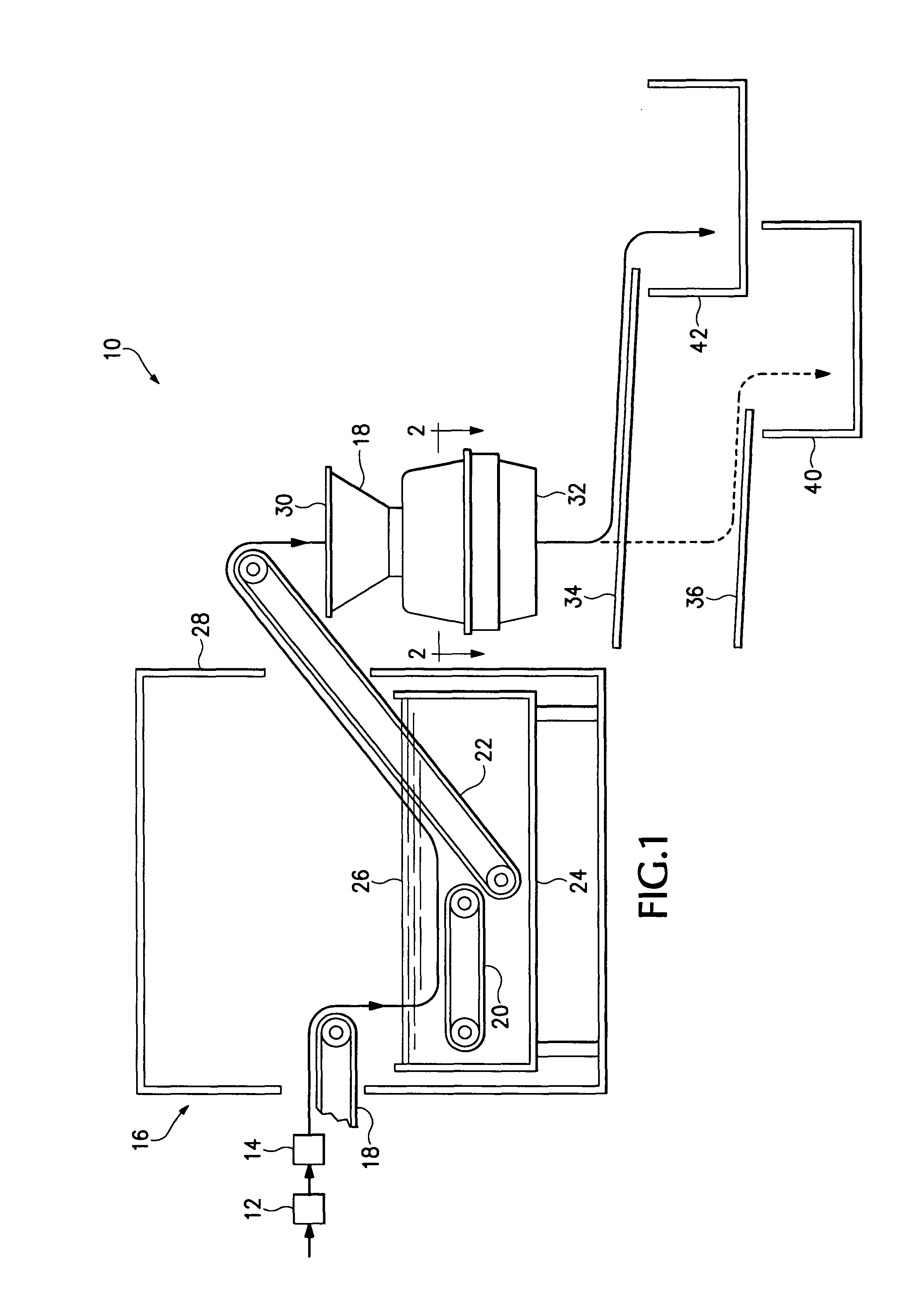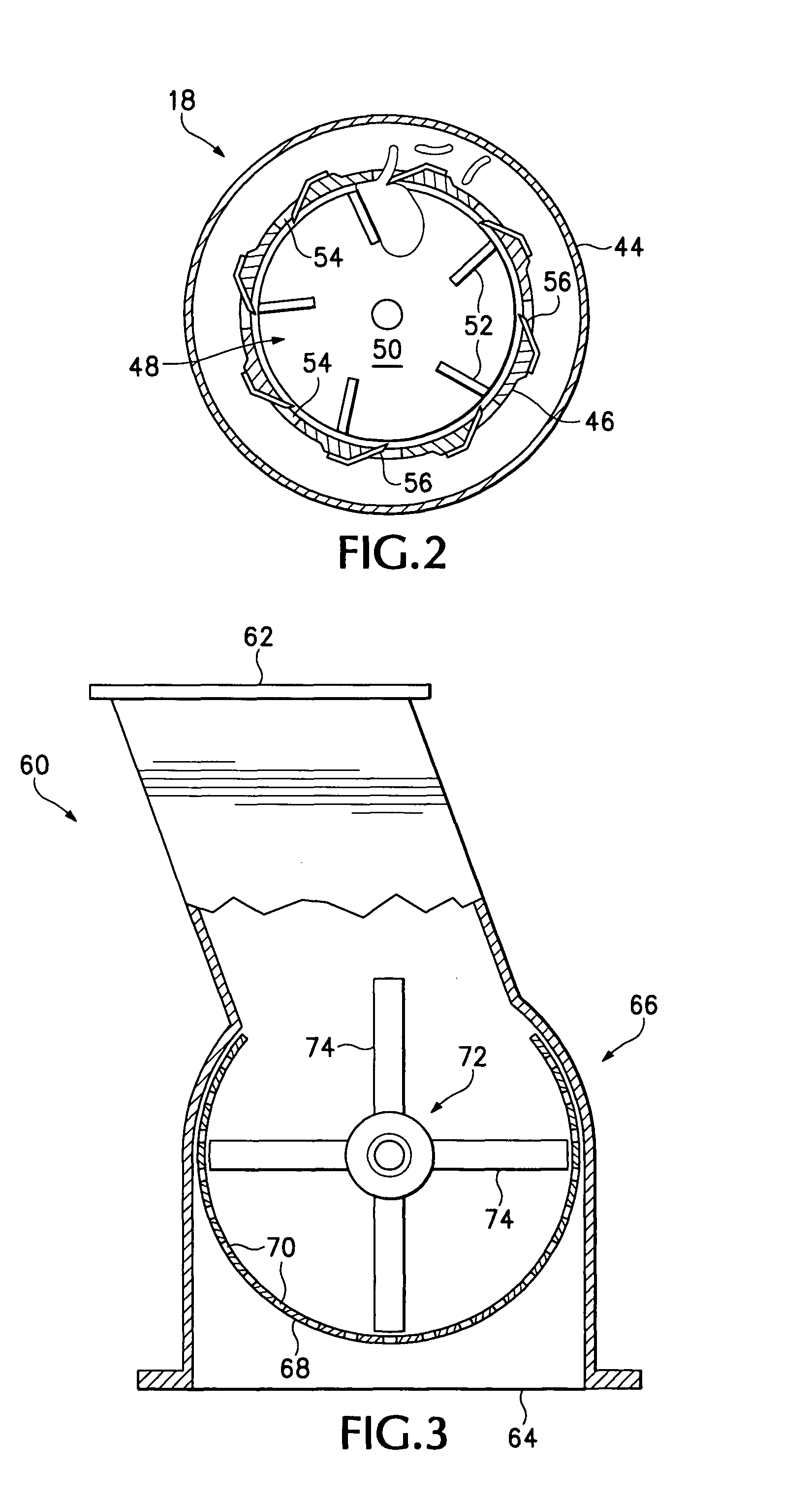Fruit breaking method and apparatus
a technology of fruit and sour fruits, applied in the field of fruit breaking methods and sour fruits, can solve the problems of difficult cutting or breaking of fruit, difficult to form fruit, especially dried fruit, on an industrial scale,
- Summary
- Abstract
- Description
- Claims
- Application Information
AI Technical Summary
Benefits of technology
Problems solved by technology
Method used
Image
Examples
Embodiment Construction
[0014]The present teachings provide methods and apparatus for mechanically sizing sweetened, dried fruit through by supercooling and then breaking the fruit. In some embodiments, the fruit may be sweetened by infusing it with sugar, for example in a sugar bath, whereas in other embodiments the fruit may be pre-sweetened prior to application of the presently disclosed methods and apparatus. The sweetened fruit either has moisture content of between 8%-18% or may be dried to a moisture content within that range, and then supercooled by exposure to a supercooling substance such as liquid nitrogen, liquid oxygen, liquid helium, liquid carbon dioxide, or solid carbon dioxide (dry ice), among others. The supercooled fruit then is mechanically broken by any suitable means such as vibration, centrifugal breaking, or milling.
[0015]FIG. 1 schematically depicts a system 10 for supercooling and mechanically breaking sweetened, dried fruit. System 10 includes a sugar infusing device 12, a dehydr...
PUM
 Login to View More
Login to View More Abstract
Description
Claims
Application Information
 Login to View More
Login to View More - R&D
- Intellectual Property
- Life Sciences
- Materials
- Tech Scout
- Unparalleled Data Quality
- Higher Quality Content
- 60% Fewer Hallucinations
Browse by: Latest US Patents, China's latest patents, Technical Efficacy Thesaurus, Application Domain, Technology Topic, Popular Technical Reports.
© 2025 PatSnap. All rights reserved.Legal|Privacy policy|Modern Slavery Act Transparency Statement|Sitemap|About US| Contact US: help@patsnap.com



